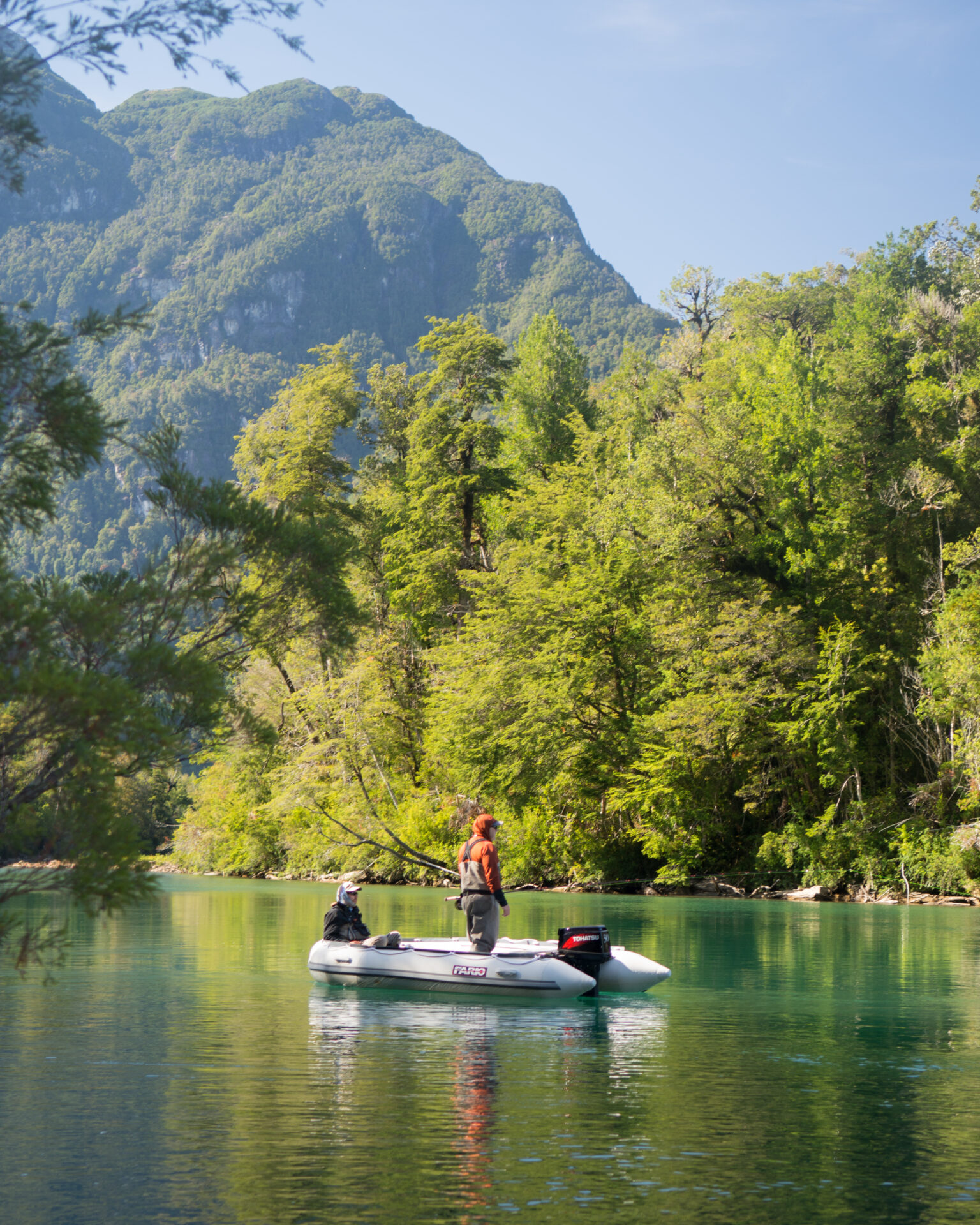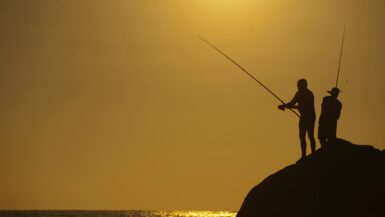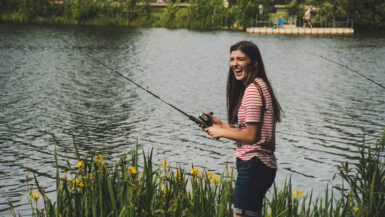Fishing is an enjoyable and rewarding experience, and carp fishing in rivers is especially rewarding. Carp are one of the most sought-after species of fish because of their unique scales, rich flavor, and size. Catching carp in rivers can be a difficult task, however, with different techniques needed to attract and catch these fish. In this article, we’ll cover the best techniques for catching carp in rivers and what makes them so effective. You’ll learn how to identify carp in rivers, the gear needed for successful carp fishing, and the best baits and lures to use. Whether you’re a beginner or an experienced angler, this article will help you catch more carp from rivers.
Preparing Your Tackle
Carp fishing in rivers requires a few essential pieces of tackle. First, the angler should purchase a good quality carp rod. A versatile 9-10 foot rod is ideal for carp fishing in rivers. To go with the rod, the angler should purchase a 6000-10000 size reel with a good drag system for handling bigger carp. For line, a 20lb monofilament is best. Additionally, the angler should buy a few carp-specific baits, such as sausage, boilies, and sweetcorn.
Organizing Tackle and Setting Up the Rig
The angler should take some time to organize all the tackle they have purchased. A tackle box or box of small bags is useful for storing the tackle and keeping it all organized. With all the tackle sorted, the angler is ready to set up the carp rig. A simple running rig with a hook, a lead and a lead clip is ideal for river fishing.
Bait Selection and the Hookbait
When it comes to carp bait, the angler should select a bait that is tailored to the season. For instance, during the summer months, maize and boilies are a great option for hook baits. In the cooler months, an angler may opt for a sausage or a pile of pellets. The hook bait should also be prepared in accordance with the season. For example, in the summer, a floating hook bait is ideal, whereas in the cooler months, a bottom bait can be used.
Baiting the Swims
Once the hook bait is ready, the angler should bait the swim they plan to fish. This can be done by placing a few free offerings towards the far bank or by casting bait into the margin. The amount of bait should be adjusted according to the clarity of the water and the size of the carp present. If the water is clear, the angler may want to use smaller baits and fewer of them.
Final Preparation Before Fishing
Now that the tackle and the bait are organized and ready to go, the angler just needs to make a few final preparations before fishing. The angler should make sure the rod is set up correctly and that the reel is loaded with the right line strength. Additionally, the angler should check their hook bait to ensure it is firmly attached to the hook. With these simple steps done, the angler is now ready to start carping!
Finding the Correct Location
When it comes to carp fishing, knowing the correct location is essential for a successful catch. Before heading out to the river, the angler should research the area thoroughly to find the spots where carp are most likely to be found. This research can include reading up on local carp fishing information, talking to other anglers, or scouting out a few potential carp fishing spots.
Look for Signs of Carp
Once a few potential spots have been identified, the angler should head out to the river and look for signs of carp. Common signs of carp include muddy beds or areas of churned up sediment, and carp’s tendency to stay close to structure like logs, stones, or submerged aquatic vegetation. If a spot looks promising, the angler should move in closer and take the time to observe the water and the surrounding habitat to get an idea of the type of water that the carp is likely to reside in.
Check the Water Conditions
It’s also important to check the water conditions in the area, such as the temperature, clarity, and current. Carp prefer certain water conditions, so it helps to pay attention to the water’s characteristics and determine whether or not it’s suitable for carp fishing. The angler should also note other factors that may affect their chances of catching carp, such as wind direction, tide levels, and the presence of other predators in the area.
Pick the Right Time
Once a favorable location has been determined, the angler should also choose the right time to fish. Carp are most active during certain times of the day, such as early morning and late evening. The angler should take care to match the timing of their fishing trips to the carp’s habits, as this will increase the chances of success.
Test the Waters
Before starting to cast the line, the angler should test the waters by casting a few dummy baits or tying a few artificial lures to their line. This will give them an idea of the type of bait that the carp in the area are likely to take, and which techniques are likely to be successful. Once the spot has been tested and the bait is ready, the angler can cast the line and start looking for carp.
Establishing a Bait
When it comes to catching carp in rivers, selecting the right bait is essential for success. While many anglers use live bait like worms, it is also important to consider the type of artificial bait that carp might respond to. Some commonly used baits for carp include: artificial corn, boilies, ground pellets, and sweetcorn.
Using Hooks for Carp Fishing
The use of hooks is also important when it comes to catching carp in rivers. The size of the hook used should be appropriate for the size of the carp you are trying to catch. For smaller carp, size 4-6 hooks are ideal. For larger carp, size 8-12 hooks are recommended. It is important to ensure that the hook is robust enough to hold the weight of the carp. It is also recommended that the hook be sharp enough to penetrate the carp’s mouth.
Creating an Appealing Bait Setup
Once you have selected your bait, it is also important to create an appealing bait setup. Consider the size and presentation of the bait. Larger baits may be necessary for larger carp. It is also appropriate to use a variety of bait combinations and presentation styles such as baiting up a small ball of bait around the hook, or creating a bed of baits. This will make it more likely that the carp will pick up the bait and get hooked.
Tying Your Fishing Line to the Bait
Before casting your line, it is important to ensure that the bait is properly tied to the fishing line. This step is especially important if you are using artificial baits like corn, pellets, or boilies. A knot such as a figure-eight or improved clinch knot can be used to tie the bait to the fishing line. Once the knot is secure, gently push the bait onto the hook.
Attracting Carp with Bait Additives
Using bait additives is a great way to attract carp to your bait. Bait additives are substances, such as oils and attractors, that can be added to the bait to make it more appealing to the carp. They can be used to mask the scent of the bait and make it easier for the carp to find it. Bait additives can also be used to enhance the flavor of the bait. This can make the carp more likely to take the bait and get hooked.
Understanding Carp Behaviour
Carp are omnivorous, meaning they will feed on a variety of food sources. In rivers, the diet of carp typically consists of aquatic invertebrates, insects, and plant material. To successfully catch carp in rivers, it is important to understand the type of food they are attracted to, and how they feed.
Identifying Areas Of Feeding Activity
In order to find areas of feeding activity, anglers should be on the lookout for carp disturbances in the water. These disturbances could be caused by carp rooting in the substrate with their mouths, or taking mouthfuls of water and spitting it back out. In addition, the presence of carp bubbles can indicate that carp are close by.
Best Baits To Use
When it comes to baiting for carp in rivers, anglers have many different choices. The most recommended baits include corn, boilies, pellets, and worms. When it comes to worms, it is important to make sure that the bait is fresh and appealing to carp. Other baits such as maggots, bread, and groundbait can also be effective.
Best Fishing Times For Catching Carp
Carp in rivers are typically most active during dawn and dusk. Therefore, it is best to target them during these times when they are more likely to be feeding. In addition, anglers should consider the weather and wind conditions when fishing for carp. Both of these things can affect when and where carp are likely to be found.
Proper Rigging Techniques
Using the proper rig setup when fishing for carp in rivers is essential for success. The most popular rig for carp fishing is the hair rig. This rig consists of a hook that is connected to the main line with a piece of monofilament or fluorocarbon. The hook is then attached to a small piece of bait, such as a worm or pellet, using a hair loop. This rig ensures that the bait stays on the hook and that carp can easily take it without getting snagged.
Tips For Carp Fishing
When fishing for carp in rivers, anglers should keep certain tips in mind. Firstly, it is important to use the right bait. As mentioned earlier, various baits can be used but it is important to choose the one that is most appealing to carp. Secondly, it is important to use the right rig. Hair rigs are the most popular rigs for carp fishing and should be used whenever possible. Lastly, it is important to know where and when to fish for carp. Look for areas of feeding activity and target carp during dawn and dusk to increase the chances of a successful catch.
By applying these tips, anglers will be able to successfully catch carp in rivers. Understanding carp behaviour and feeding patterns is essential for catching carp, so researching this and familiarizing oneself with the best techniques will help ensure success.
Setting Up the Rig and Baiting Up
To set up the rig and baiting up for the best techniques for catching carp in rivers, you need some essential gear. This includes a good quality rod and reel, a suitable line for casting, carp hooks, a float, weights, a bait bucket, and a variety of carp bait.
Hook Sizes for Carp Fishing
When choosing the right hooks for fishing for carp in rivers, it is important to consider the size of the carp. Typically, carp fishers use hooks that are size 8 or 10. These hooks should be strong enough to handle the size and weight of the carp but not so big that it will scare them away.
Rigging Up the Gear
Once you have chosen the right hooks, you will need to rig up your gear. Attaching the line to the reel is the first step. Next, tie the hooks onto the line, ensuring they are securely fastened. Once this is done, attach the float and weights to the line according to the size of the carp you are expecting and the depth of the river.
Baiting Up for Carp
Once your gear is set up, you can start baiting up for carp. A variety of bait options exist, such as maggots, worms, boilies, and corn. Carp are known to be attracted to sweet-smelling baits such as corn and boilies, so these are good options. Make sure to check the regulations of the area you’re fishing in as some areas do not allow certain types of bait. Once your bait is chosen, put a generous amount onto your hook. It is important to not over-bait the hook, as this will make it difficult for the carp to take the bait.
Casting Out For Carp
Once you are properly set up and baited up with the best techniques for catching carp in rivers, you can start casting out. Use a side cast method to cast out the line, ensuring that it goes to the desired area. Be sure to keep a close eye on the float, as it will tell you when the carp takes the bait. When you see the float dip, set the hook and start to reel in your catch!
Choosing the Right Time of Day
Carp fishing in rivers can be a highly rewarding yet challenging task. One of the essential factors that decide your fishing success is choosing the right time of day. The most successful carp anglers understand that carp move around and feed at different times throughout the day. Understanding the timing of these movements will give you a great edge when trying to catch carp in rivers.
Factors Influencing Carp Movement Patterns
Understanding the factors that influence carp movement in rivers is important in deciding when to go out and cast your line. These factors include temperature, depth of water, and light availability. Carp tend to find food when the temperature is 16°C or above as this triggers their feeding response. They are also more active in shallow water since they can more easily find food. Carp rely on light to find food, so they tend to feed more in well-lit areas.
Optimizing Your Time With the Right Strategy
Knowing the prime time for catching carp in rivers is only part of the equation. You now have to strategize and optimize your time. Carp will often feed several times during the day, so it’s important to determine when that feeding time is. Generally speaking, carp are most active during the early morning and late evening. This is also when the water is at its warmest, and light is most available.
Incorporating Techniques to Catch Carp in Rivers
Now that you have determined the optimal times to go out and fish, it’s time to apply the right techniques. When deciding which baits to use, it’s best to go with natural bait such as maggots, worms, and bread. Carp are also attracted to more colorful baits such as corn, pellets, and boilies. Be sure to also use the right tackle and make sure it is suitable for the size of the carp you are targeting.
Considering Other Tips to Catch Carp in Rivers
In addition to timing and bait selection, there are a few other things you should consider when trying to catch carp in rivers. Making sure your tackle is set up properly and using the correct amount of weight is essential. Additionally, using a quality line can help you make your casts longer and more accurate. Lastly, to ensure maximum effectiveness it’s important to be aware of the weather, wind, and water conditions in the area of your prospective fishing spot.
By considering the factors influencing carp movement, optimizing your time, and incorporating the right techniques and tips, you can increase your chances of success when catching carp in rivers.
Successful Carp Fishing Strategies
Carp fishing in rivers can be a rewarding and exciting experience for anglers of all skill levels. With the right techniques, a successful day of fishing is more likely. Presenting bait on the surface is key since carp typically feed at the surface. Plastic popup corn or imitation boilies of different colors can also be used. When using a boilies, it is important to keep the bait at a consistent depth in the water. Also, when fishing in rivers, remember that carp are bottom feeders and feeding areas can be found by targeting deeper water. Finally, setting the hook correctly is essential for successful carp fishing- the key is to resist the temptation to set the hook too quickly. By following these tips and taking the time to scout for areas where carp are likely to feed, anglers of all levels can have successful days of carp fishing in rivers.





Leave a reply